Three perfect ferry holidays to France, according to our expert
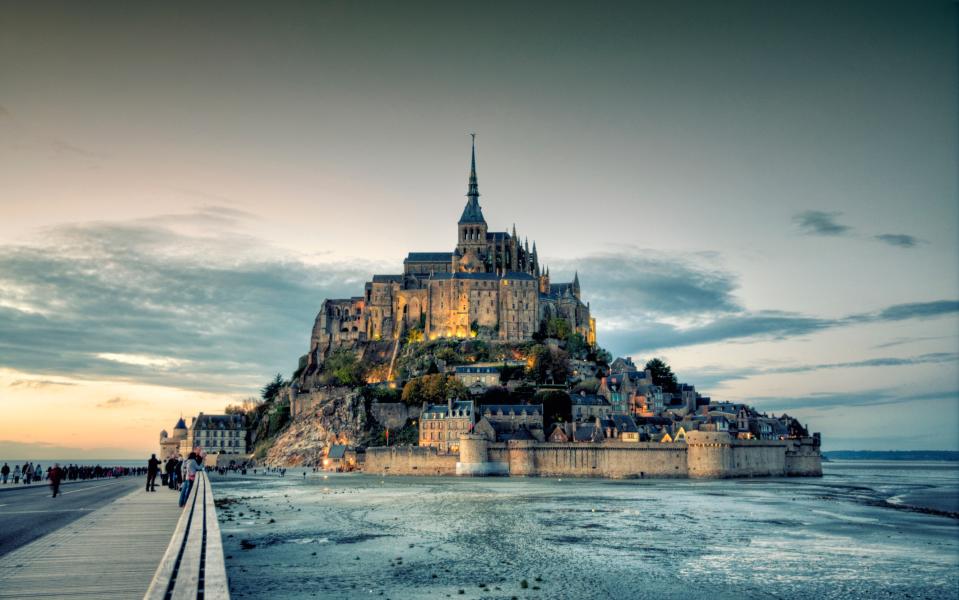
Contemplating post-lockdown holidays other than in Britain is accounted treachery in some quarters. This is extreme. Naturally, if I lived in Britain, I’d see the case for Dorset, the Dales or the Cairngorms in 2020. But I’d also see the case for abroad, where no-one’s heard of Matt Hancock, Simon Cowell or Wetherspoons. We may neither wish, nor be able, to go far – but abroad starts just over the Channel. And ferries and tunnel permitting, we’ll be safe in our own cars. If that sounds like you, here are three off-the-peg week-long trips you might consider. They involve no excessive driving and, in two cases, contain serious patriotic elements.
From Calais
Day 1
Take the A26 out of town, turn off at exit 2 and onto Eperlecques where the vast bunker, built by slave labour in 1943 to rain V2s down on London, retains a monstrous sense of menace (leblockhaus.com). To Arras for two nights at the Hotel de l’Univers, a stately ex-monastery of a place (univers.najeti.fr; B&B doubles from £107). Dine on something local – chicken fillet in Maroilles cheese – at the Cave des Saveurs (lacavedessaveurs.fr; menu £20).

Day 2
Two Great War days, that we might forget ourselves and salute those who lived a lot worse than lockdown, then died. French soldiers, say, of whom 40,058 are buried on the hill-top at Notre-Dame de Lorette. Nearby, the gold panels of the 1130-feet Remembrance Ring list the names of all 579,606 men who died in this region. Or the Canadians, whose valour and ingenuity are commemorated nearby at Vimy Ridge, among a monumental hush of lawns, woodland, and restored trenches. Now take a break at the Louvre’s offspring in Lens. The museum whisks you through the entirety of world culture in a couple of hours. And it’s free (louvrelens.fr).
Return to Arras. Take a drink on the arcaded Place des Héros, its façades crow-stepped like giant skittles. Eat on the next door Grand’Place, at l’Ambassade-d’Arras (m.facebook.com/lambassadearras; mains from around £15).
Day 3
To Wellington quarry – dug out from ancient Arras quarry workings by Kiwi tunnellers to conceal 24,000 men underground, that they might break out and stun the Hun on Easter Monday, 1917. A section of the 14-mile labyrinth is open to visitors. You’ll be pretty stunned, too (carrierewellington.com). Now, the Somme battlefields. These days, the hedge-less, sugar-beet landscape is punctuated by smudges of villages comprising brick and hard work. But here are names vital to the narrative of Commonwealth nations. War cemeteries and memorials abound. Choices are invidious but vital. I’d suggest stopping, in this order, at Bullecourt to understand something of what the Aussies achieved; Rancourt, the only spot with Commonwealth, French and German cemeteries; Longueval to learn of the South Africans; the huge Lochnagar bomb crater at La Boisselle, Lutyens’ pharaonic British memorial at Thiépval, and, finally, Beaumont-Hamel, to walk in the footsteps of the Royal Newfoundland Regiment. These may well be the most moving visits you ever make anywhere.
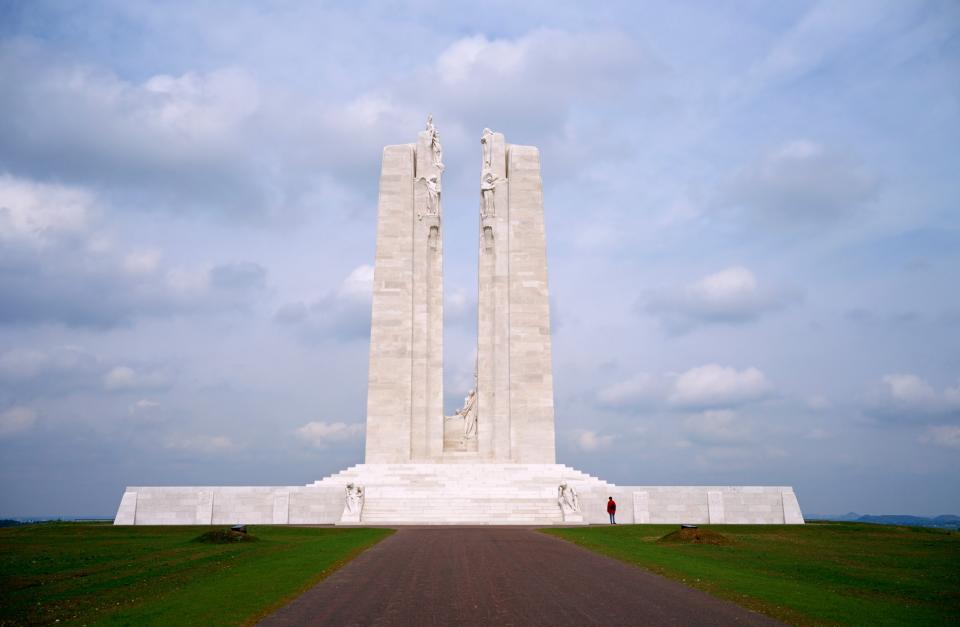
On to Montreuil and Tim Matthew’s Maison 76, as noble a B&B as this region affords (maison76.com; B&B doubles £155). Dine at Alexandre Gauthier’s Anecdote (anecdote-restaurant.com; mains from £22).
Day 4
Visit Montreuil. Ramparts and a citadel recall that the place was once important, the equestrian statue of Haig that it was also British GHQ, 1916-18. The little town retains an elevated aspect. To Azincourt (Agincourt, to you and me) where in a blink-and-you-miss-it village, and with unexpected decency, the French have recently overhauled what was already a pretty good museum to their 1415 drubbing. Now it’s exceptional (azincourt1415.com). Back to Montreuil via the Crequoise valley which runs out of the 21st-century to better times of cows, wildflowers and streams. Dinner-wise, difficult to go wrong. Montreuil’s calling card is as “la destination gastronomique”. Try Le Patio (leshautsdemontreuil.fr; two-course menu £24).
Day 5
If cramming things in, bob down to Le Crotoy on the Somme bay. It’s a vast sea-scape of cliffs, sands, dunes, seals and pretty much every bird on the move. The Marquenterre Park packs in many of the bay’s best bits (marquenterrenature.fr). North up the coast, skirting Le Touquet for Hardelot, whose neo-Tudor château celebrates the entente cordiale (chateau-hardelot.fr). Dickens was a great fan of next-door Boulogne – “as quaint, picturesque (and) good a place as I know”. Spend time in the historic upper town he knew before, down on the sea-side, a romp around the Nausicaa Sea Centre, Europe’s biggest aquarium in Europe (nausicaa.fr).
Motor on to Wiméreux and the sea-front Hotel Atlantic. Dine there at the brasserie (atlantic-delpierre.com, doubles from £124; mains from £16).
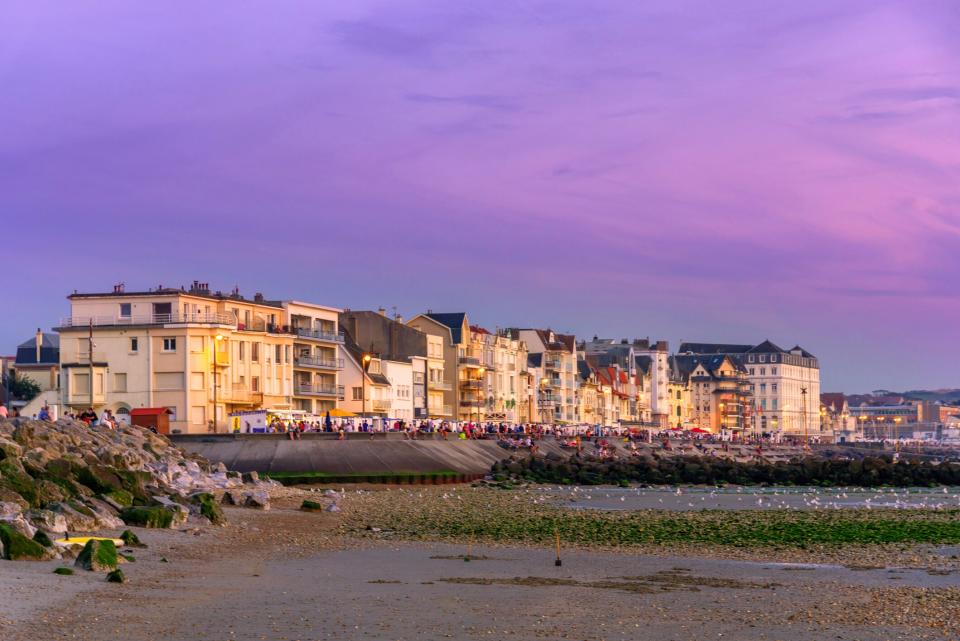
Day 6
Easier day, wandering Wimereux, whose ozone-fuelled modesty is as disarming as this coast is grandiose. Downs, heath and farmland sweep up to cliffs and headlands. Winds at Caps Gris and Blanc Nez may blast your eyebrows off. Return to Wimereux to dine, for the trip’s last night at the Atlantic’s Michelin-starred restaurant. Menus from £46. Don’t stint.
Day 7
Return to Calais
From Le Havre
Day 1
First job: visit Le Havre. Initially, the port city seems difficult to love. Flattened in the second world war, it was rebuilt with apparently Stalinist severity: vast avenues fringed with endless concrete apartments, and then some. Closer inspection, though, reveals the project as a ground-breaking post-war way of rehousing 80,000 people in decent, light and airy conditions. And St Joseph’s church – a celestial kaleidoscope – indicates that concrete may aspire to the sublime. Up the Alabaster coast to the cliffs and rock arches of Etretat. Check into the manorial Domaine St Clair Le Donjon, and dine there (hoteletretat.com; doubles from £84, menus from £31).
Day 2
Explore Etretat, the cliffs and rock formations which frame it. This will stir you sufficiently for a swing south to the Seine valley. Pause at Jumièges, the ruins of whose 7th-century Benedictine abbey merit an hour of anyone’s time (abbayedejumieges.fr). Onto Rouen and the Hotel Mercure Rouen Centre Cathédrale (all.accor.com; doubles from £99). Dinner-wise, the woodily wonky and beflowered La Couronne, estd. 1345, is the oldest auberge in France. From the window seats, you might have watched Joan of Arc burn (lacouronne-rouen.fr; menus from £33).
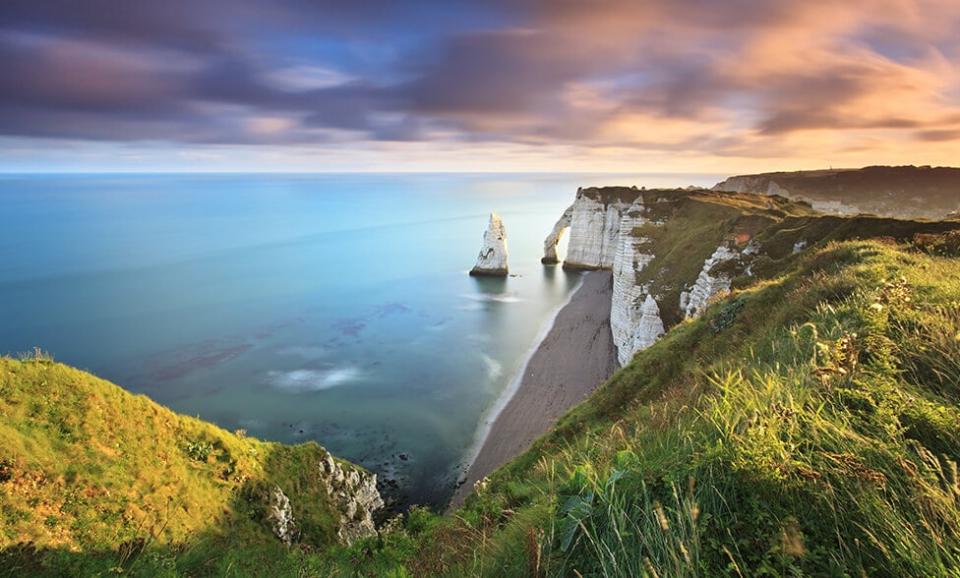
Day 3
Rouen. Dense with half-timbering, the historical centre focuses on the Place du Vieux Marché. There, a statue, a cross and a church looking (somewhat disastrously) like a pangolin mark the spot where Joan was incinerated. Across town, in the Archbishop’s palace, the Historial Jeanne-d’Arc recounts the extraordinary story: teenage girl smashes English soldiery before leading her king to coronation at Reims, undergoing an amazingly corrupt trial and an appalling death in Rouen, all before her 20th birthday (historial-jeannedarc.fr; £9). Later, take in the Fine Arts museum (mbarouen.fr) and cathedral which obsessed Monet. He painted the façade some 28 times. Push out le bateau to dine at Gilles Tournadre’s two Michelin star Gill (gill.fr; menus from £66).

Day 4
Swish west, to the Pays-d’Auge. Stop at Coudray-Rabut (outside Pont-l’Evêque), for Calvados Drouhin, Normandy’s brandy being the best thing which ever happened to apples (calvados-drouhin.com). Villages as enticing as a dairy maid’s smile – Beuvron-en-Auge, Cambremer, Crèvecoeur – crop up along lanes weaving between high hedges, orchards and pastures plump with cattle and horses. Life moves at the speed of ripening camembert. Now south-west, to the ambitiously named Suisse Normande district. The stretch around Clécy and Thury-Harcourt is more Pennines than Alps. That said, it rises to crags, rocky hills and gorges sufficient to the needs of the incurably active. Continue to Bayeux and the town-house B&B, Hotel Poppa (hotel-poppa.com; B&B doubles from £97). Eat at the Volet Qui Penche (levoletquipenche.fr; menus from £17).
Day 5
D-Day today. From Sword to Utah beaches, there are 22 museums. Memorials and cemeteries abound. As on the Somme, choice is vital. If it’s your first time, take a guided tour perhaps with Normandy Sightseeing Tours (normandy-sightseeing-tours.com; full day £97, half-day £66pp). Independently, and running east-west, start at Courseulles-sur-Mer, where Canadian grit is celebrated in a shore-side museum (junobeach.org). Ver-sur-Mer is the site of the British memorial, due to open later in 2020. What’s left of the Mulberry harbour lies offshore at Arromanches, the German batteries at Longues-sur-Mer need seeing as does the US cemetery at Colleville – affording, as it does, dignity in death to those denied it in the last hours of life. Finally to the Pointe-du-Hoc, scaled by 225 US Rangers of outrageous courage and determination. Impossible to imagine the bowel-wrenching terror of these sites in June 1944 but only by visiting do you grasp the enormity of the operation, and of the courage involved. Return to Bayeux. Dine at Le Pommier (restaurantlepommier.com; menus from £25).
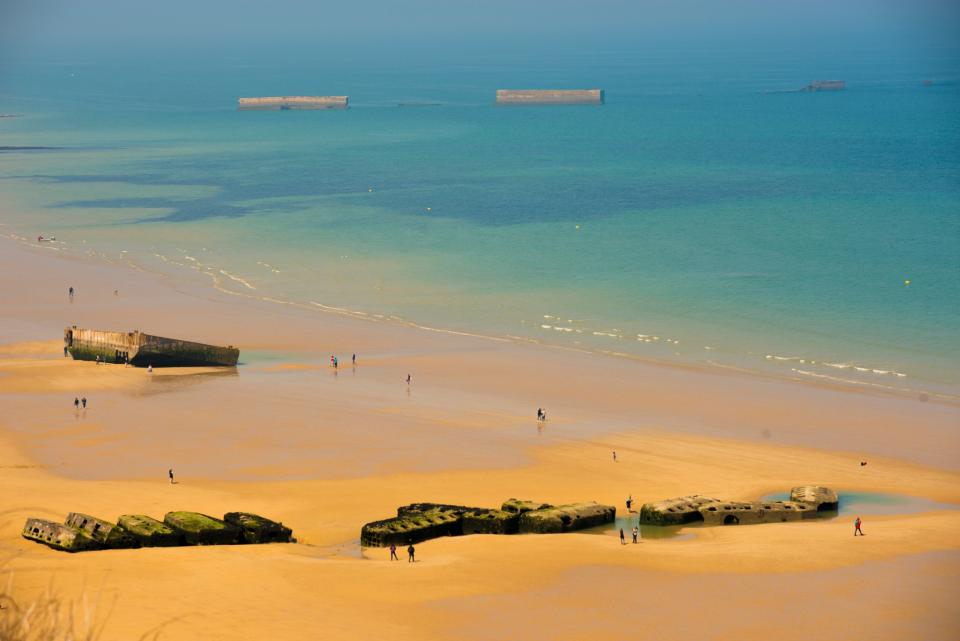
Day 6
Walk to Bayeux’s Commonwealth war cemetery. Then walk back to the Bayeux Tapestry and its 230-feet needlework coverage of an earlier conflict (bayeuxmuseum.com). Now head for Ranville. The Pegasus Memorial Museum – on the site where Major John Howard’s glider-borne troops landed – is maybe the most affecting of all Normandy war museums (musee.memorial-pegasus.com). Strike out, via Cabourg (Marcel Proust’s holiday spot – Grand Hotel, room 414), for Deauville. Here’s a protectorate of palace hotels, broad avenues and pumped-up villas, the Normandy seaside as filtered through the assumptions of Parisian glitterati. Across the river, Trouville is much older, a hard-working fishing port with a more bohemian beau-monde grafted on. Make for the townhouse Hotel Fer A Cheval (hotel-trouville.com; doubles from £67). Eat on the waterfront at Les Affiches (facebook.com/lesaffichestrouville; mains from £11).
Day 7
Pause in Honfleur, an ancient port of half-timbering and Impressionist memories and, overall, as cute as a baby panda. Soar over the Pont de Normandie and into Le Havre for a final meal at Le Margote (lemargote.fr; lunch menu £20).

From Saint Malo
Day 1
To Mont St Michel, France’s most mesmerising monument. It rises on its isle as if borne from a more exalted dimension, adding solid magnificence to the shifting bay. Climbing up the granite outcrop, the slab-sided abbey rises to the Romanesque church reaching for the sky. Below the one village street bustles with visitors, as it always has (then pilgrims, now tourists). As you drive away, you’ll find it hard to believe that such magnificence exists. That said, the Château de Chantore – in endless grounds, across the bay at Bacilly – has an 18th-century wow factor of its own. One of my top five chambres-d’hôtes (chateaudechantore.com; B&B doubles from £158). Dine at La Pause de Genêts in Genêts (lapausedesgenets.fr; menus from £19).
Day 2
Up the coast to the cliff-perched seaside resort of Granville, overlain with memories of parasols and boaters. Also of Christian Dior, whose family home is now a museum commemorating couture (muse-dior-granville.com). The walking around here is lovely. Return down the coast to the Bec-d’Andaine, the sandy headland from where walkers set out to cross to the Mont St Michel. Dine at La Toque Aux Vins in St Martin-des-Champs (latoqueauxvins.fr; menus from £37).
Day 3
West to Dinan, one of the comeliest medieval spots in Brittany. Now skirt Saint Brieuc on the N12 for a pause in seaside St Quay-Portrieux. Onto Paimpol, with its port, marina, shellfish – oysters, scallops, blue lobster – and memories of fishing, sea-faring and mugging English ships. “Freebooting,” they called it. Check into the K’Loys, a three-star on the harbour (hotel-kloys.com; doubles from £40, port-view rooms, from £57). Dine at Théo Jasmin on Place Gambetta (facebook.com/theojasmin.paimpol; menus from £19).
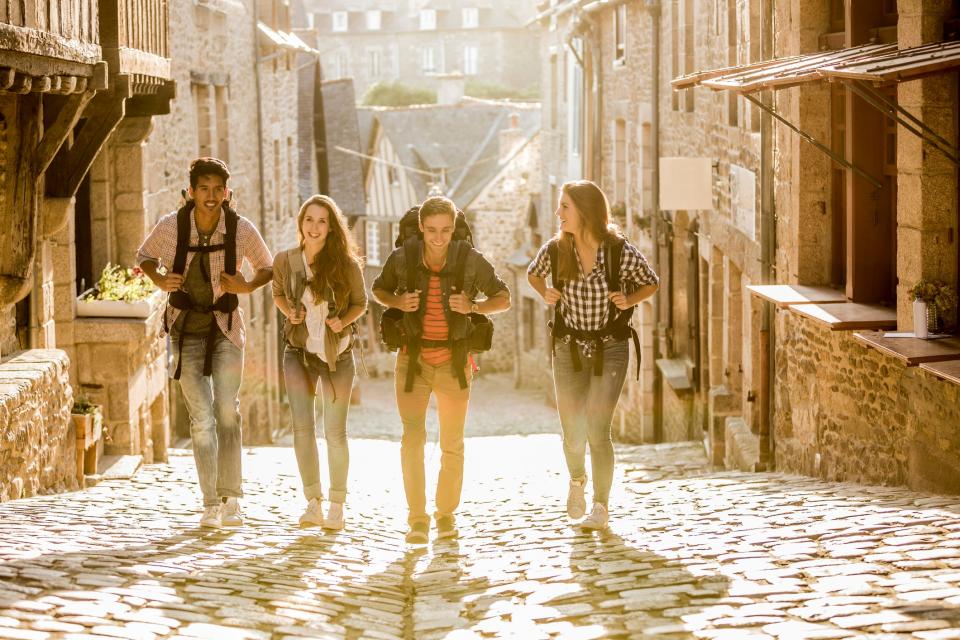
Day 4
Take the 10-minute ferry ride to the isle of Bréhat. A treat. Spring and summer flowers overcome the stone island village, Guerzido beach is fab and there’s wilder wandering to the Paon lighthouse at the northern tip of the island. On returning, call in on the glassworks in the island’s citadel. Their stuff is pretty and contemporary. Ferry back to Paimpol, dinner on the waterfront at Le Neptune (facebook.com/leneptunepaimpol; menus from £23).
Day 5
East along the rocking, rolling coast to Cap Fréhel – for lashings of natural splendour and, on the next-door headland, the 14th-century Fort La Latte. Stroll a little before the onward drive to Dinard which, from the late 19th century and into the 20th was essentially a colony for the English rich and famous. Our well-heeled ancestors caused to be built bumper Belle Epoque villas, hotels and cottages with bow windows. Also tennis courts, golf courses and CofE churches. The resort retains the distinguished aspect our forebears favoured. Cross the estuary to St Malo and, within the walls, check in to the three-star Quic-en-Groigne (quic-en-groigne.com; doubles from £59) or four-star Maison des Armateurs (maisondesarmateurs.com; doubles from £78). Eat at Le Cambusier (cambusier.fr; menus from £28).

Day 6
St Malo amply rewards exploration. Malouins were the first French sea-farers to Canada, India and the Falklands (whence the islands’ French and Spanish names). Trade and plunder brought enormous riches. Though 1944 Allied bombing wrecked the place, the old town has been rebuilt to recapture its authoritative aspect. Walk the ramparts to note the dense labyrinth of dressed stone streets speaking of power, wealth and skulduggery. Beyond, fine beaches are rife with sand-yachts and, back in town, bars and restaurants suffice to sea-farers’ needs. Dine this evening at Jean-Yves Bordier’s Bistro Autour Du Beurre (lebeurrebordier.com; mains from £19).

